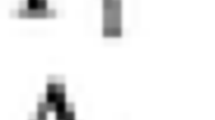Abstract
This article begins by exploring a lost topic in the philosophy of science:the properties of the relations evidence confirming h confirmsh' and, more generally, evidence confirming each ofh1, h2, ..., hm confirms at least one of h1’, h2’,ldots;, hn'.The Bayesian understanding of confirmation as positive evidential relevanceis employed throughout. The resulting formal system is, to say the least, oddlybehaved. Some aspects of this odd behaviour the system has in common withsome of the non-classical logics developed in the twentieth century. Oneaspect – its ``parasitism'' on classical logic – it does not, and it is this featurethat makes the system an interesting focus for discussion of questions in thephilosophy of logic. We gain some purchase on an answer to a recently prominentquestion, namely, what is a logical system? More exactly, we ask whether satisfaction of formal constraints is sufficient for a relation to be considered a (logical) consequence relation. The question whether confirmation transfer yields a logical system is answered in the negative, despite confirmation transfer having the standard properties of a consequence relation, on the grounds that validity of sequents in the system is not determined by the meanings of the connectives that occur in formulas. Developing the system in a different direction, we find it bears on the project of ``proof-theoretic semantics'': conferring meaning on connectives by means of introduction (and possibly elimination) rules is not an autonomous activity, rather it presupposes a prior, non-formal,notion of consequence. Some historical ramifications are alsoaddressed briefly.
Similar content being viewed by others
REFERENCES
Avron, A.: 1991, ‘Simple Consequence Relations’, Information and Computation 92, 105–139.
Avron, A.: 1992, ‘Axiomatic Systems, Deduction and Implication’, Journal of Logic and Computation 2, 51–98.
Avron, A.: 1994, ‘What is a Logical System?’, in Gabbay (ed.), What is a Logical System?, Clarendon Press, Oxford.
Barwise, J.: 1985, ‘Model-Theoretic Logics: Background and Aims’, in J. Barwise and S. Feferman (eds), Model-Theoretic Logics, Springer-Verlag, New York.
Belnap, N.: 1962, ‘Tonk, Plonk and Plink’, Analysis 22, 130–134.
Carnap, R.: 1950, Logical Foundations of Probability, University of Chicago Press, Chicago.
Cutland, N. and P. Gibbins: 1982, ‘A Regular Sequent Calculus for Quantum Logic in which and are Dual’, Logique et Analyse 99, 221–248.
Dummett, M.: 1959, ‘Truth’, Proceedings of the Aristotelian Society LIX, 141–62. Page reference to the reprint in Dummett, Truth and Other Enigmas, Duckworth, London, 1978.
Dummett, M.: 1991, The Logical Basis of Metaphysics, Harvard University Press, Cambridge, MA.
Gabbay, D. M. (ed.): 1994, What is a Logical System?, Clarendon Press, Oxford..
Hacking, I.: 1979, ‘What Is Logic?’, Journal of Philosophy LXXVI, 285–318. Page reference to the reprint in R. I. G. Hughes (ed.), A Philosophical Companion to First-Order Logic, Hackett, IN, 1993. Also reprinted in Gabbay (ed.), 1994.
Hempel, C. G.: 1945, ‘Studies in the Logic of Confirmation’, Mind 54, 1–26, 97–121.
Horn, A. and A. Tarski: 1948, ‘Measures in Boolean Algebras’, Transactions of the American Mathematical Society 64, 467–497.
Hughes, R. I. G.: 1985, ‘Semantic Alternatives in Partial Boolean Quantum Logic’, Journal of Philosophical Logic 14, 411–446.
Jaskowski, S.: 1948, ‘—Rachunek zdán dla systemów dedukcyjnych sprzecznych’, Studia Societas Scientarum Torunensis, Section A, 1, 55–77; English translation, ‘Propositional Calculi for Contradictory Deductive Systems’, Studia Logica XXIV, 143–57.
Nishimura, H.: 1980, ‘Sequential Method in Quantum Logic’, Journal of Symbolic Logic 45, 339–52.
Popper, K. R. and D. Miller: 1983, ‘A Proof of the Impossibility of Inductive Logic’, Nature 302, 687–688.
Priest, G.: 1979, ‘The Logic of Paradox’, Journal of Philosophical Logic 8, 219–241.
Priest, G. and R. Routley: 1989, ‘Systems of Paraconsistent Logic’, in G. Priest, R. Routley and J. Norman (eds), Paraconsistent Logic: Essays on the Inconsistent, Philosophia, Munich.
Schroeder-Heister, P. and K. Došen (eds): 1993, Substructural Logics, Clarendon Press, Oxford.
Sundholm, G.: 1986, ‘Proof Theory and Meaning’, in D. Gabbay and F. Guenthner (eds), Handbook of Philosophical Logic, Volume III, Reidel, Dordrecht.
Weber, S.: 1983, ‘A General Concept of Fuzzy Connectives, Negations and Implications Based on t-Norms and t-Conorms’, Fuzzy Sets and Systems 11, 115–134.
Author information
Authors and Affiliations
Rights and permissions
About this article
Cite this article
Milne, P. Is There A Logic Of Confirmation Transfer?. Erkenntnis 53, 309–335 (2000). https://doi.org/10.1023/A:1026410717298
Issue Date:
DOI: https://doi.org/10.1023/A:1026410717298




